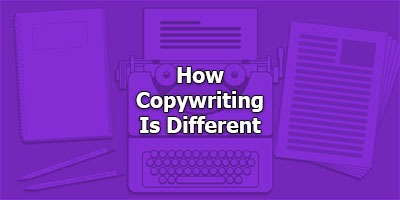The Partnership Economy explores the power of partnerships through candid conversations and stories with industry leaders. Our hosts, David A. Yovanno, CEO and Todd Crawford, Co-founder, of impact.com, unpack the future of partnerships as a lever for scale and an opportunity to put the consumer first.
…
continue reading
Content provided by David Garfinkel. All podcast content including episodes, graphics, and podcast descriptions are uploaded and provided directly by David Garfinkel or their podcast platform partner. If you believe someone is using your copyrighted work without your permission, you can follow the process outlined here https://ppacc.player.fm/legal.
Player FM - Podcast App
Go offline with the Player FM app!
Go offline with the Player FM app!
How Copywriting is Different
Manage episode 478161925 series 1433066
Content provided by David Garfinkel. All podcast content including episodes, graphics, and podcast descriptions are uploaded and provided directly by David Garfinkel or their podcast platform partner. If you believe someone is using your copyrighted work without your permission, you can follow the process outlined here https://staging.podcastplayer.com/legal.

It happens to all of us, and can you remember a time where you wondered: “Is this really good copywriting? It seems like what I should write, but somehow it’s not clicking.” Here’s why you wonder. There’s a well-known saying from the Navy SEALs: "Under pressure, you don't rise to the level of your expectations, you sink to the level of your training". That goes far beyond the world of the Navy SEALs, of course. It’s true in all of life. Well, one thing I don’t think we’ve taken a good enough look at it: As copywriters, how were we trained? I don’t mean for copywriting specifically. I mean for writing at all. See, how you were ORIGINALLY trained to write can easily override what you know you SHOULD do as a copywriter. We’re going to take a good look at that today, and see what we can do about it. What we cover in today’s show: School-style prose clearly informs readers but doesn’t motivate immediate action. Remember: your goal isn’t to describe things—it’s to prompt your readers to act now. Journalism, blogs, and content writing focus on entertaining or informing readers without directly driving immediate responses. Don't just guide your reader through the facts; clearly show them exactly what to do next. Technical and scientific writing deliver clear, factual instructions but lack urgency. Don’t simply explain—combine facts with emotional appeal to inspire immediate action. Corporate or military writing provides structured, formal information but rarely persuades readers to take quick action. Drop the formalities; clearly invite your readers and give them a reason to act immediately. Traditional advertising-agency writing builds emotional connections and brands but often delays immediate response. Remember John E. Kennedy’s words: “Advertising is salesmanship in print.” Keep your copy action-oriented, clearly instructing your readers exactly how and when to respond.
Download.
539 episodes
Manage episode 478161925 series 1433066
Content provided by David Garfinkel. All podcast content including episodes, graphics, and podcast descriptions are uploaded and provided directly by David Garfinkel or their podcast platform partner. If you believe someone is using your copyrighted work without your permission, you can follow the process outlined here https://staging.podcastplayer.com/legal.

It happens to all of us, and can you remember a time where you wondered: “Is this really good copywriting? It seems like what I should write, but somehow it’s not clicking.” Here’s why you wonder. There’s a well-known saying from the Navy SEALs: "Under pressure, you don't rise to the level of your expectations, you sink to the level of your training". That goes far beyond the world of the Navy SEALs, of course. It’s true in all of life. Well, one thing I don’t think we’ve taken a good enough look at it: As copywriters, how were we trained? I don’t mean for copywriting specifically. I mean for writing at all. See, how you were ORIGINALLY trained to write can easily override what you know you SHOULD do as a copywriter. We’re going to take a good look at that today, and see what we can do about it. What we cover in today’s show: School-style prose clearly informs readers but doesn’t motivate immediate action. Remember: your goal isn’t to describe things—it’s to prompt your readers to act now. Journalism, blogs, and content writing focus on entertaining or informing readers without directly driving immediate responses. Don't just guide your reader through the facts; clearly show them exactly what to do next. Technical and scientific writing deliver clear, factual instructions but lack urgency. Don’t simply explain—combine facts with emotional appeal to inspire immediate action. Corporate or military writing provides structured, formal information but rarely persuades readers to take quick action. Drop the formalities; clearly invite your readers and give them a reason to act immediately. Traditional advertising-agency writing builds emotional connections and brands but often delays immediate response. Remember John E. Kennedy’s words: “Advertising is salesmanship in print.” Keep your copy action-oriented, clearly instructing your readers exactly how and when to respond.
Download.
539 episodes
All episodes
×Welcome to Player FM!
Player FM is scanning the web for high-quality podcasts for you to enjoy right now. It's the best podcast app and works on Android, iPhone, and the web. Signup to sync subscriptions across devices.



